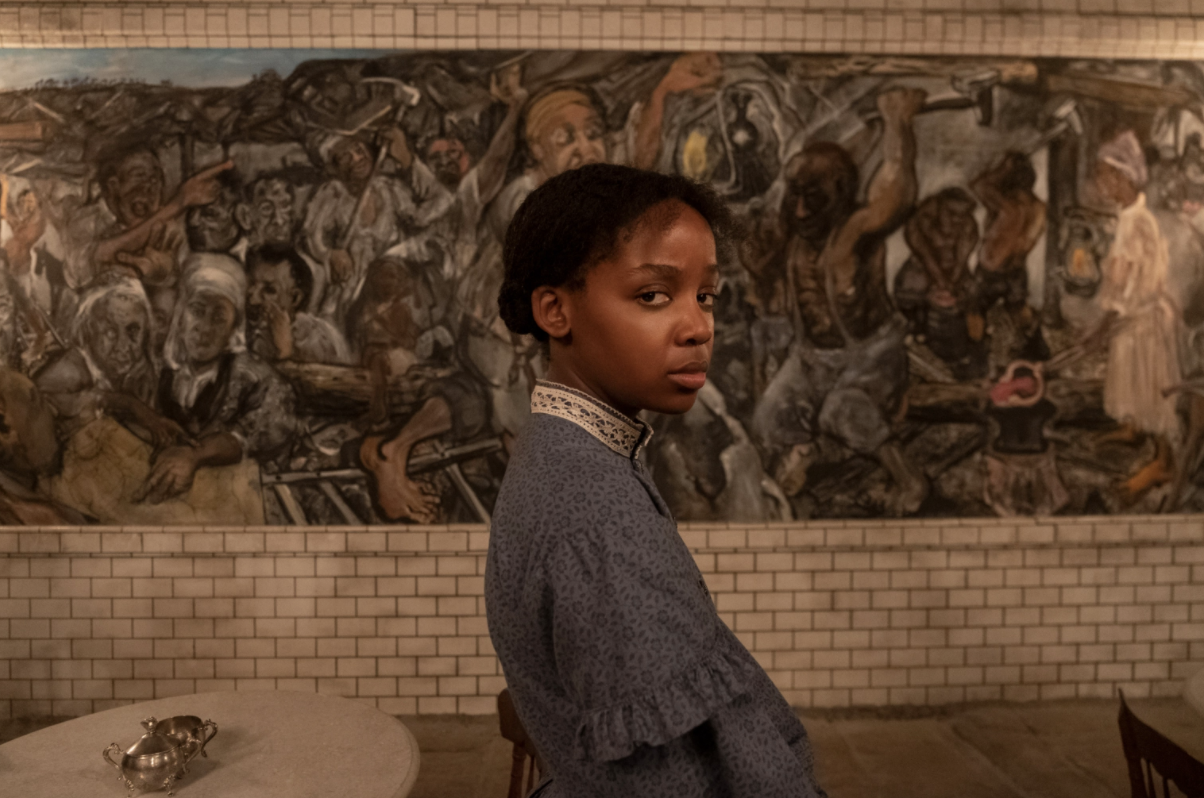As dazzling as it is heartbreaking, The Underground Railroad, directed by the astounding Barry Jenkins, is not your ordinary history lesson. Jenkins crafts a spellbinding world plagued by the horrific past of America as his titular character Cora (Thuso Mbedu) navigates her way through the historical underground railroad. Immediately from the first shot to the dreamlike sequence that follows, the show resembles an artistic vision similar to the auteur brought about by Jordan Peele in his masterpiece, Get Out. This approach is then carried on throughout the ten-chapter episodic rollercoaster that is The Underground Railroad.
Adapted from Colson Whitehead’s Pulitzer Prize-winning novel of the same name, the show divides itself into ten chapters, with each episode becoming a cinematic experience that demands to be watched and analyzed for years to come. Period pieces set in America’s Slavery era are often depicted by some of the most gruesome imagery cinema and television have to offer, as they have a responsibility to accurately portray life back then. Jenkins follows this blueprint with an appalling portrayal of what life on the plantation was like. However, instead of inclining splatter film notions that expose torture and pain as the show’s only defining quality, Jenkins uses his imaginative approach towards the show’s cinematography to balance the story’s motives.
The show follows the story of a runaway slave named Cora who escapes a Georgian Plantation in the mid-1800s with her lover, Caesar (Aaron Pierre). Throughout their journey they make their way to a physical representation of the underground railroad made up of a series of interconnected railroad systems that harbor runaway slaves on actual trains making the journey up north. A notorious slave hunter named Ridgeway (Joel Edgerton) has his sights set on catching Cora and Caesar, creating a suspenseful chase story that perfectly crafts the intense and dramatic moments of the show.
The fictional embodiment of real trains throughout the series perpetuates an ethereal fantasy-based counter story that coexists with the historically accurate violence and torture. With two storylines identified within the substantive train system, the show flows effortlessly through a series of violence and drama that brings this adaptation together cohesively.
It is within the most wistful moments that Jenkins relies heavily on character development to give viewers a breather in between such dreadful story material. After three consecutive episodes of brutal suffering and suspense, the show delivers a fourth chapter that follows the backstory of the slave Hunter Ridgway. Although some elements of this viewpoint can be boring, it is very much needed after witnessing the most heinous crimes be enacted upon human beings.
The show’s leads, Cora and Caesar, are composed of two newcomers in the acting industry, giving fresh authentic performances that deliver all the way down to the slightest nuances. Casting unknown actors was a brilliant move on Jenkins’s part, allowing for the characters to be fully separated from the actor and completely immersed in the story.
The horror of the slavery period is well-known from countless adaptations through the years. The Underground Railroad completely subverts traditional historical storytelling and relies heavily on fictional archetypes that leave room for director Barry Jenkins to artistically convey a deep message about our past and where we are going in the future, making the show unlike any other before it.
All episodes of The Underground Railroad are currently streaming on Amazon Prime.
Advertisement
Advertisement
